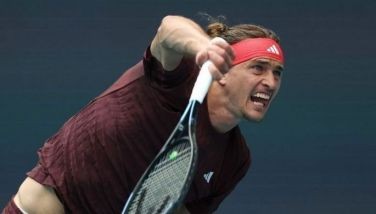Ending a 20-year wait

It was in May 1996 when President Ramos instructed PSC chairman Philip Juico and Secretary of the Interior and Local Governments Robert Barbers “to establish a Philippine National Institute of Sports within the PSC and to formulate and implement a nationwide training program for sports managers and administrators, in coordination with the Department of Education, Culture and Sports and the Commission on Higher Education.”
In November that same year, Philsports was born and rolled out several programs through former PSC chairman Dr. Perry Mequi. So the records will show that Philsports was launched in May 1996 and inaugurated in November 1996.
On Oct. 1, PSC chairman Butch Ramirez will relaunch Philsports which unfortunately, was shelved after the Ramos Administration. Juico, however, said it was revived briefly in 2005 when Ramirez took over the PSC helm under President Arroyo. But for some reason, Philsports just wasn’t a priority when the PSC leadership changed hands.
“To Butch’s credit, he tried to revive it but those who succeeded him just killed it,” said Juico. “The proper term (to use in Ramirez’ new initiative) is perhaps to relaunch or revive or resuscitate Philsports after several PSC chairmen killed it with deliberate inaction. ”
Juico said there’s no need to reinvent the wheel because the Master Plan for Philippine sports development over a six-year period has been in existence since 1996. That means the Master Plan has gathered dust in the course of five Olympics (from 2000 to 2016), five Asian Games and 20 Southeast Asian Games. “Imagine what could have happened if succeeding PSC chairmen just took a look at that and updated it with the help of the apolitical public servants in the PSC who helped craft that Master Plan and Philsports,” added Juico wistfully. “All those opportunities (are) gone with the wind. Now, we’re looking at the following ahead of us under the Duterte Administration or up to 2022 – three SEA Games, with one to be held in the Philippines, at least one Asian Games (2018 in Jakarta) and the Tokyo Olympics in 2020.”
Juico wasn’t able to attend the recent two-day Sports Summit organized by the PSC because of illness but the outline of the Master Plan he personally engineered was presented to the audience. Juico also missed attending the Rio Olympics on doctors’ orders to rest. PATAFA, which he heads, had the most number of athletes in the Philippine delegation with 400-meter hurdler Eric Cray, long jumper Marestella Torres and women’s marathoner Mary Joy Tabal. Each of the three athletes registered Olympic qualifying standards and made it to Rio on merit.
Juico said to unravel the Master Plan that’s 20 years old, “we need a period of consolidation.” He continued: “The framework for the development of grassroots and elite sports is in our midst. We just need to look at correcting the facts, looking at what has been done and use those that are useful and discard what is useless, devoid of partisan and personal interest. Definitely, no room for political and personal vendetta. My purpose for voicing out is to correct the facts, learn from others and not get credit for anything.”
Juico said updating the Master Plan shouldn’t be a tedious process because issues remain the same. He said the exercise of updating the Master Plan must start at the end. “Let’s start by revisiting the PSC vision and mission,” he said. “The vision is for a unified sports program which will enhance the quality of life of Filipinos, instill national pride and attain international prestige through excellence in sports. The mission is to serve as the prime catalyst and advocate for the propagation and development of Philippine sports. The PSC’s two basic objectives are to increase participation in sports by Filipinos and to achieve excellence in sports performance by Filipinos.”
Juico said Philsports was envisioned to provide for the holistic development of national athletes and the creation of a national youth talent reserve and the development of coaches, officials, managers and others who assume professional responsibilities in physical education and sports. The mandate remains the same today.
“The realistic balance between mass-based and elite sports, with focus on selected sports, has to be agreed upon or else we will continually be muddling through while our neighbors continue to leave us behind,” said Juico. “The challenge all Administrations face is to avoid the inevitable calls for a quick fix or a band-aid approach. It is clear that Philippine sports needs a period of positive consistency – a period of consolidation up to 2022 with progress being made in the short-term but more importantly, setting the platform for significant gains in the future. Programs and coordinating mechanisms must be made operable and functional. The goal is getting those mechanisms to work efficiently and effectively.”
In the list of priorities, Juico said the first is to re-examine the Physical Education system “from the miniscule hours devoted to it, to the way it is taught and how it is mistakenly used by isolating the talented for special attention while neglecting the majority who will have less incentive to commit to a healthy lifestyle in the future. Our biggest resource is our people.”
The framework and guidelines to operate Philsports and implement the Master Plan of 1996 are laid out in crystal-clear language. Ramirez isn’t wasting time to get back on track because the Philippines has 20 years of sleeping on the job to make up.
- Latest
- Trending




























